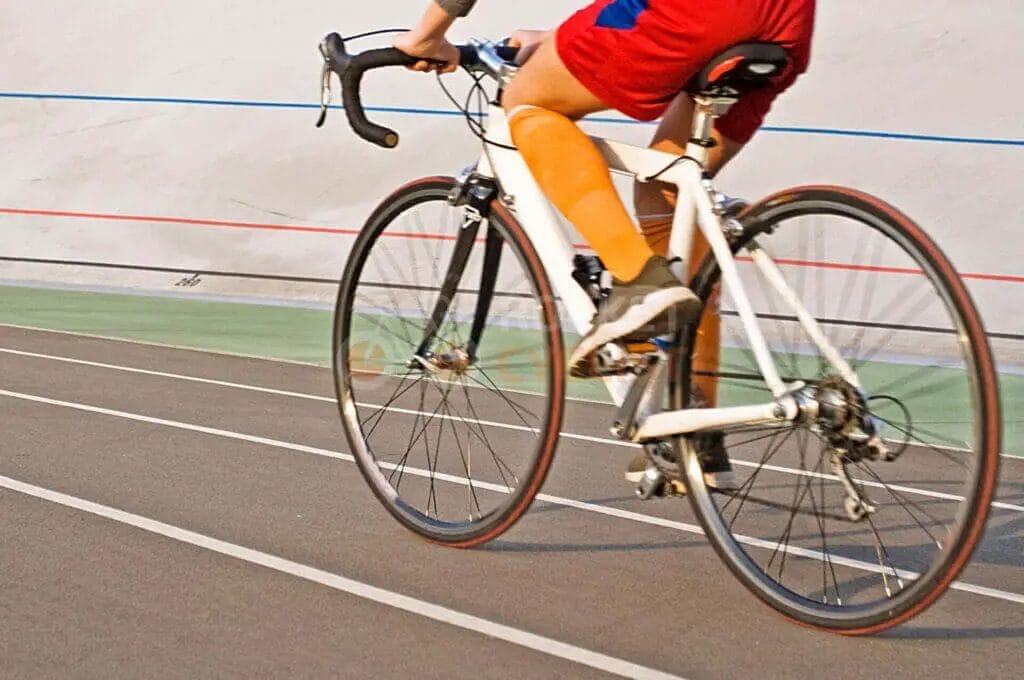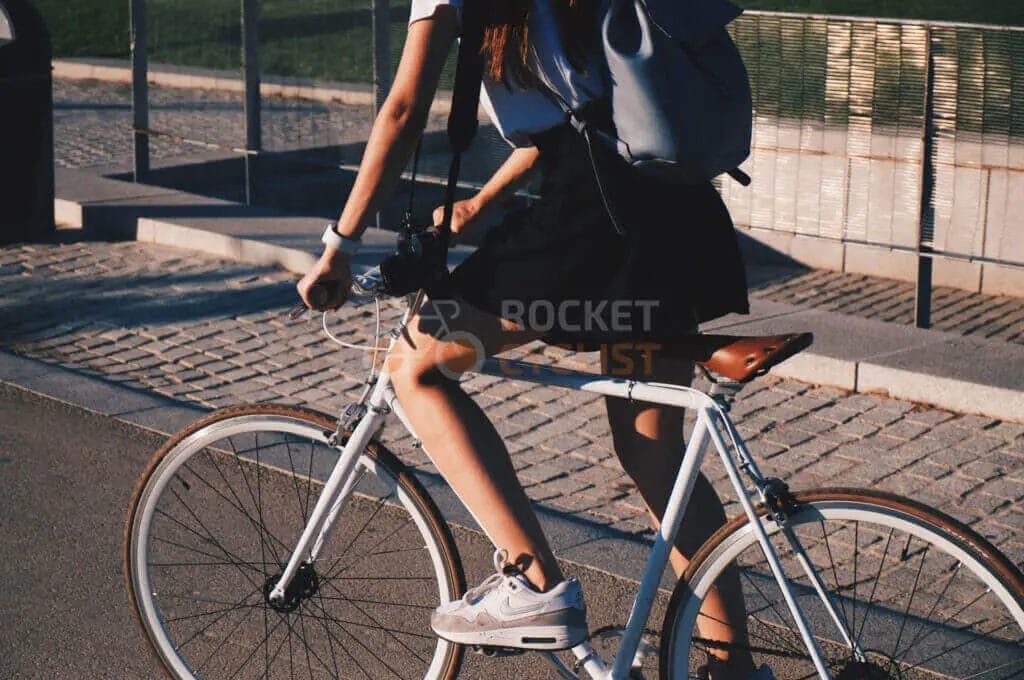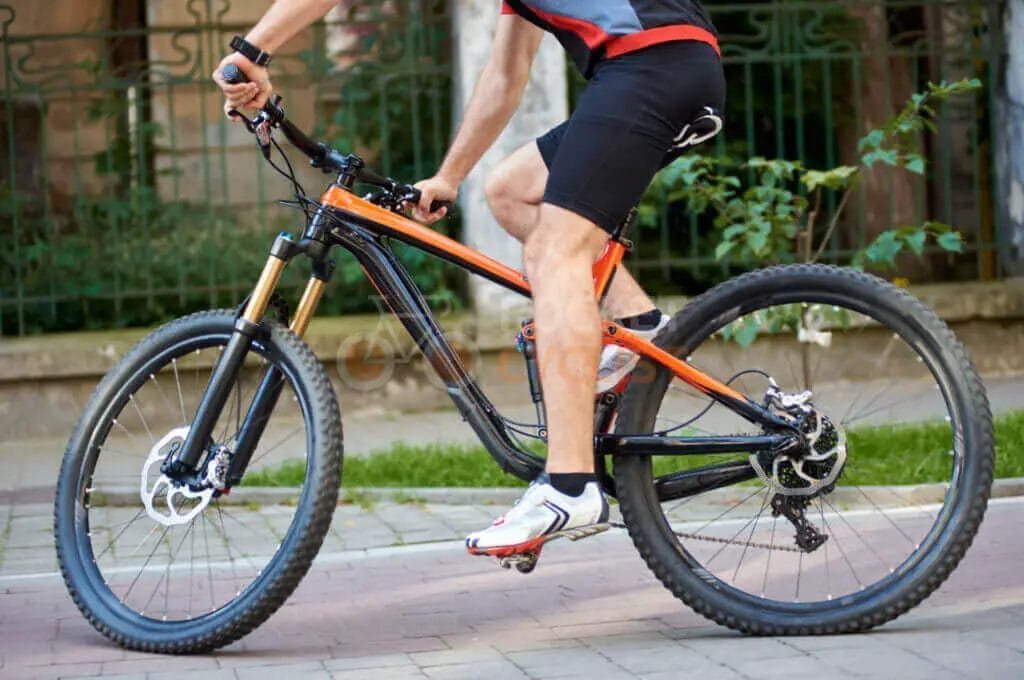Last Updated on March 31, 2024 by Vinson Lozano
Why is a comfortable bike seat important?

A comfortable bike seat is essential for a pleasant riding experience. It can make a significant difference in your comfort level, allowing you to ride for longer periods without discomfort. A poorly designed or uncomfortable bike seat can lead to aches, pains, and even saddle sores, which can affect your enjoyment and performance while cycling.
Common problems with bike seats
Many cyclists struggle with uncomfortable bike seats, but luckily, there are solutions to these common problems. Some issues that riders often face include:
1. Pressure on sensitive areas: Bike seats can cause pressure and numbness in the perineal area, leading to discomfort and potential health issues.
2. Pain in the sit bones: Ill-fitting or poorly cushioned seats can cause pain and soreness in the sit bones, making riding uncomfortable.
3. Chafing and rubbing: Friction between the seat and the rider’s skin can result in chafing and irritation, especially during longer rides.
4. Lack of support: Inadequate support from the bike seat can lead to poor posture and muscle fatigue, affecting both comfort and performance.
To address these problems and make your bike seat more comfortable, there are several solutions and adjustments you can try.
Choose the right bike seat

Understanding different types of bike seats
When it comes to making your bike seat more comfortable, choosing the right seat is crucial. Here are some different types of bike seats to consider:
1. Cushioned Seats: These seats are designed with extra padding to provide a soft and comfortable ride. They are ideal for casual riders or those who prefer a more comfortable seating experience.
2. Racing Seats: These seats are designed with a narrower profile and less padding. They are ideal for riders who prioritize performance and are used to spending long hours on the saddle.
3. Gel Seats: Gel seats are filled with gel padding that conforms to your body shape, providing optimal comfort. They are great for riders who experience discomfort or pressure on certain areas of their body.
Factors to consider when choosing a bike seat
1. Riding Style: Consider your riding style, whether it’s casual, racing, or mountain biking. Each style requires a different type of seat to optimize comfort and performance.
2. Width and Shape: Different riders have different sit bone widths, so it’s essential to choose a seat that matches your anatomy. Measure your sit bone width to ensure a proper fit.
3. Material: Seats can be made from various materials, including synthetic leather, vinyl, or carbon fiber. Consider the durability, breathability, and comfort of the material.
4. Suspension: Some seats come with built-in suspension to absorb shocks and vibrations, providing a smoother ride, especially on rough terrains.
Remember to test different bike seats and take your time to find the one that suits you best.
Adjusting your seat position

When it comes to making your bike seat more comfortable, adjusting its position can make a big difference. Here are some tips to help you find the right seat position:
Proper seat height and angle
• Seat height: Adjust the height of your seat so that when your pedal is at its lowest point, your leg is almost fully extended, but with a slight bend at the knee. This will help to prevent strain on your knees and improve pedaling efficiency.
• Seat angle: Tilt your seat slightly forward or backward to find a position that feels comfortable for you. Experiment with small adjustments until you find the angle that suits you best.
Finding the right position for your body
• Fore and aft position: Slide your seat forward or backward along the rails to find a position where your weight is evenly distributed between your hands, seat, and feet. This can help to reduce pressure on sensitive areas.
• Handlebar position: Adjust the height and reach of your handlebars to find a comfortable riding position. A professional bike fitting can be helpful in determining the optimal handlebar position for your body.
By making these adjustments to your bike seat position, you can improve your comfort and enjoyment while riding. Remember to take your time and experiment with different positions to find what works best for you.
Adding padding and cushioning

Making your bike seat more comfortable can be as simple as adding some padding or cushioning. Here are a few options to consider:
Gel seat covers
- Gel seat covers are a popular choice for adding extra comfort to your bike seat. They are made of a soft gel material that molds to your body, providing a cushioned surface to sit on.
- Gel seat covers are easy to install and can be found in different sizes to fit various bike seats. They are also lightweight and portable, so you can easily bring them with you on rides.
- With their shock-absorbing properties, gel seat covers help reduce pressure on sensitive areas, making your ride more comfortable and enjoyable.
Extra cushioning options
- If a gel seat cover is not enough, you can also try adding extra cushioning to your bike seat. There are foam seat pads and seat cushions available that provide an additional layer of comfort.
- Foam seat pads are lightweight and can be easily attached to your bike seat. They provide a soft and supportive surface to sit on, reducing pressure on your sit bones.
- Seat cushions, on the
Installing a suspension seatpost
If you’re looking to make your bike seat more comfortable, installing a suspension seatpost can be a game-changer. Here are the benefits of a suspension seatpost and how to install one:
Benefits of a suspension seatpost
- Improved shock absorption: A suspension seatpost can absorb shocks and vibrations from rough terrains, making your ride more comfortable.
- Reduced fatigue: By minimizing the impact on your body, a suspension seatpost can help reduce fatigue and discomfort during long rides.
- Better control: With improved shock absorption, you’ll have better control over your bike, especially on uneven surfaces.
- Adjustability: Suspension seatposts often come with adjustable settings, allowing you to customize the level of suspension to suit your preferences and riding style.
How to install a suspension seatpost
- Choose the right seatpost: Measure the diameter of your current seatpost to ensure you choose a suspension seatpost with a compatible size.
- Remove the old seatpost: Loosen the clamp bolt and slide out the old seatpost from the seat tube.
- Prepare the suspension seatpost: Attach any necessary components or adapters included with the suspension seatpost.
- Insert the suspension seatpost: Apply grease to the lower part of the suspension seatpost and insert it into the seat tube.
- Adjust the height: Secure the suspension seatpost at your desired height using the seat clamp bolt.
- Test the suspension: Get on your bike and test the suspension by riding over bumps and rough terrain.
Installing a suspension seatpost can greatly enhance your comfort on the bike, allowing you to enjoy longer rides with minimal discomfort.
Wear padded bike shorts

Benefits of padded bike shorts
- Increased comfort: Padded bike shorts provide extra cushioning and support to make your ride more comfortable, especially during long rides.
- Reduced friction: The padding in bike shorts helps reduce friction between your body and the seat, preventing chafing and discomfort.
- Moisture-wicking: Many padded bike shorts are made with moisture-wicking materials that help keep you dry and prevent sweat buildup.
- Improved performance: When you’re more comfortable on your bike, you can focus more on your performance and enjoy your ride to the fullest.
Choosing the right padded bike shorts
- Fit: Look for bike shorts that fit snugly but not too tight, ensuring they stay in place during your ride.
- Padding: Consider the thickness and density of the padding. Some riders prefer thicker padding for extra cushioning, while others prefer a thinner pad for a more streamlined feel.
- Material: Opt for breathable and moisture-wicking materials like spandex or polyester blends to keep you cool and dry during your ride.
- Quality: Invest in high-quality bike shorts that are durable and designed to withstand frequent use.
By wearing padded bike shorts, you can enhance your comfort and enjoyment while cycling. So grab a pair and hit the road for a more pleasurable riding experience.
Regular maintenance and care
When it comes to making your bike seat more comfortable, regular maintenance and care are essential. Here are a few tips to keep in mind:
Keeping your bike seat clean
- Regularly clean your bike seat with a mild soap and water solution to remove dirt and debris.
- Use a soft brush or cloth to gently scrub away any stains or grime.
- Avoid using harsh chemicals or abrasive cleaners that can damage the material of your bike seat.
- Wipe down your bike seat after each ride to prevent sweat and moisture from accumulating.
Checking for wear and tear
- Inspect your bike seat regularly for any signs of wear and tear, such as cracks or tears in the material.
- Check the stitching and ensure that it is still intact.
- Replace your bike seat if it is showing significant signs of damage or if it is causing discomfort during rides.
By practicing regular maintenance and care, you can ensure that your bike seat remains in good condition and provides a more comfortable riding experience.
Alternatives to traditional bike seats
Saddle alternatives for different riding styles
If you find that a traditional bike seat isn’t providing the comfort you need, there are several alternatives to consider that may alleviate discomfort and provide a more enjoyable riding experience. Keep in mind that comfort is a personal preference, so it may take some trial and error to find the perfect fit for you. Here are some saddle alternatives to consider based on different riding styles:
1. Noseless saddles: These saddles have a design that eliminates the nose portion, relieving pressure on sensitive areas. They are often recommended for riders who experience numbness or pain in the perineal area. One of the most popular noseless saddle is All-Wings Falcon saddle, designed and made from Taiwan.
2. Wide, cushioned saddles: These saddles provide ample padding and support, making them ideal for riders who prefer an upright riding position, such as recreational cyclists.
3. Split saddles: Split saddles have a cutout or groove down the center, redistributing pressure and providing relief for riders who experience discomfort in the genital area.
4. Gel seat covers: Gel seat covers can be added to a traditional bike seat to provide extra cushioning and shock absorption.
Remember to always adjust your bike seat properly and wear padded cycling shorts for added comfort.


